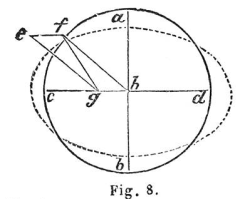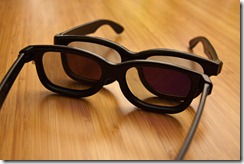
 Reductionism is the idea that all known phenomena are the simple sum of simpler, more fundamental ones.
Reductionism is the idea that all known phenomena are the simple sum of simpler, more fundamental ones.

Anyways, here is how that fantastic piece of entertainment begins:
"The theory of relativity is a mathematical system that allows no exceptions."
I was reading an article in SciAm this morning about the possibility of a robot uprising. Don’t laugh yet, this is a very real, if still quite remote possibility.
The main idea that was described was that AI could rise one day to self-awareness and to an ability to improve itself through self-replication beyond human abilities to control it.
Sure, that’s one possibility, and some people are actually arguing that if that’s the case, maybe it’s just the march of evolution and humankind is just destined to one day become obsolete and be replaced by something fitter, whether from good old evolution or by artificially creating its own replacement.
I would tend to agree but I do have an objection. There is a distinction in this kind of speculation that is not often pointed out: self-replication and evolution are not the same thing.
 Amy was asking me some questions on "alternate dimensions" and "parallel universes". Here's my answer, which is entirely non-scientific although it is based on a few things I know (or think I know) about physics. I'm suspecting for example that the string theory stuff is a little shaky as I never really studied the math in there.
Amy was asking me some questions on "alternate dimensions" and "parallel universes". Here's my answer, which is entirely non-scientific although it is based on a few things I know (or think I know) about physics. I'm suspecting for example that the string theory stuff is a little shaky as I never really studied the math in there.
 Uh oh, I've been watching Fox at the gym again...
Uh oh, I've been watching Fox at the gym again...
The big thing they were talking about was Harry Knox, a White House advisor, having said the Catholic Church was "hurting people in the name of Jesus" by forbidding the use of condoms. Fox pundits of course were outraged, their arguments being that scientific consensus was agreeing with the Pope that condoms weren't preventing the spread of AIDS and that the Catholic Church was saving a lot more lives through its charities than Knox's organization, HRC.
Let's look at these claims.
 It’s the week-end, which is the perfect time for a slightly off-topic post. It’s still engineering of sorts though in that it provides what I think is an original and cheap solution to a real problem.
It’s the week-end, which is the perfect time for a slightly off-topic post. It’s still engineering of sorts though in that it provides what I think is an original and cheap solution to a real problem.
I don't watch the news and to be honest I don't understand why anyone with half a brain would. That is, I don't watch except when they put a screen in my face with the captions on like it's the case at the gym. I didn't think I would ever regret being able to read. A TV screen is a terrible thing: it's very hard not to look at it. And I had forgotten the Zune.
So I watched the news.
Here's what I learned...
 Every so often, somebody points out how bad of a metric code coverage is. And of course, on its own, it doesn’t tell you much: after all, it’s a single number. How could it possibly reflect all the subtlety (or lack thereof) of your designs and of your testing artillery? Of course, within all the various *DD approaches, some better than others enable you to know whether or not your code conforms to its requirements, but I thought I’d take a moment to reflect on the general idea of a software metric and how it relates to the mothers of all metrics: physical ones, cause you know, I used to be a scientist. Proof: the lab coat on the picture.
Every so often, somebody points out how bad of a metric code coverage is. And of course, on its own, it doesn’t tell you much: after all, it’s a single number. How could it possibly reflect all the subtlety (or lack thereof) of your designs and of your testing artillery? Of course, within all the various *DD approaches, some better than others enable you to know whether or not your code conforms to its requirements, but I thought I’d take a moment to reflect on the general idea of a software metric and how it relates to the mothers of all metrics: physical ones, cause you know, I used to be a scientist. Proof: the lab coat on the picture.
 Warning: this post is devoid of contents.
Warning: this post is devoid of contents.
During one of the very first classes of my Bachelor of Science in Physics, I got struck with a particular piece of information that sounded like a revelation to me:
If a problem exhibits a certain symmetry, the solutions to this problem do not necessarily exhibit that same symmetry, but the set of solutions always does.
